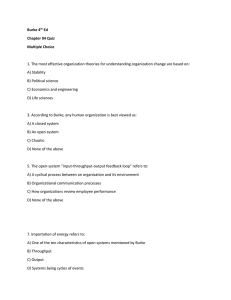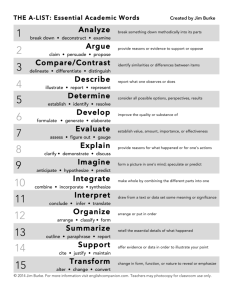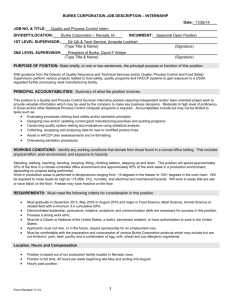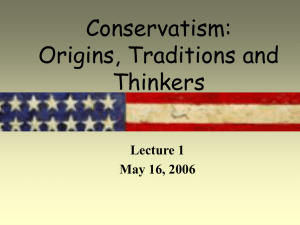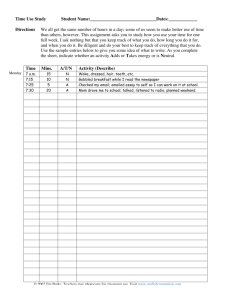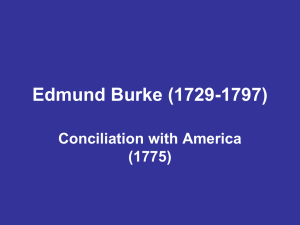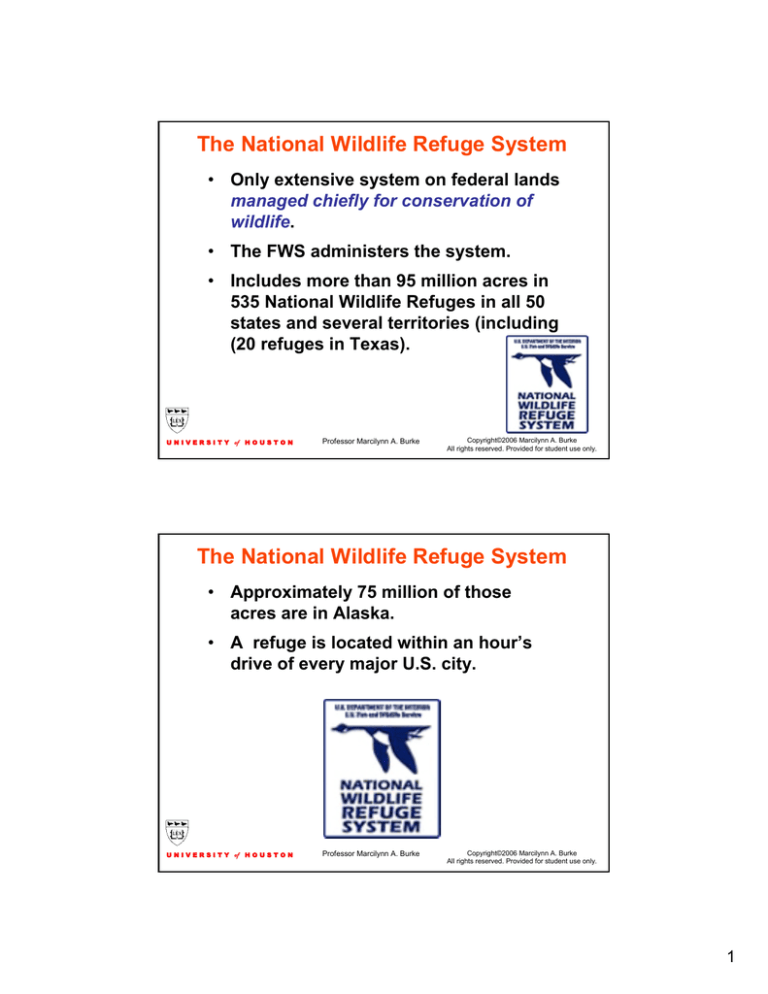
The National Wildlife Refuge System
• Only extensive system on federal lands
managed chiefly for conservation of
wildlife.
• The FWS administers the system.
• Includes more than 95 million acres in
535 National Wildlife Refuges in all 50
states and several territories (including
(20 refuges in Texas).
U N I V E R S I T Y of H O U S T O N
Professor Marcilynn A. Burke
Copyright©2006 Marcilynn A. Burke
All rights reserved. Provided for student use only.
The National Wildlife Refuge System
• Approximately 75 million of those
acres are in Alaska.
• A refuge is located within an hour’s
drive of every major U.S. city.
U N I V E R S I T Y of H O U S T O N
Professor Marcilynn A. Burke
Copyright©2006 Marcilynn A. Burke
All rights reserved. Provided for student use only.
1
The National Wildlife Refuge System
Cont’d
• President Theodore Roosevelt
designated Florida’s Pelican Island as
the first wildlife refuge in 1903.
• MBTA did not provide for acquisition of
habitat so Congress passed the
Migratory Bird Conservation Act in
1929.
• The Conservation Act remains the
major source of authority for wildlife
refuge acquisition today.
U N I V E R S I T Y of H O U S T O N
Professor Marcilynn A. Burke
Copyright©2006 Marcilynn A. Burke
All rights reserved. Provided for student use only.
The National Wildlife Refuge System
Cont’d
• Refuges may be created or added by—
•
Executive order
•
Act of Congress
•
Transfers from other federal
agencies, or
•
Purchase, donation or exchange
under various authorities such as
the Migratory Bird Conservation
Act, the ESA, or the Land and Water
Conservation Fund.
U N I V E R S I T Y of H O U S T O N
Professor Marcilynn A. Burke
Copyright©2006 Marcilynn A. Burke
All rights reserved. Provided for student use only.
2
The National Wildlife Refuge System
Cont’d
• The Migratory Bird Hunting Stamp Act
enacted in 1934 assured a steady
source of funding for acquisition of
habitat under the Conservation Act.
• Act almost assured a refuge system
keyed to migratory waterfowl.
• 1958 amendment allowed the use of
funds to acquire “waterfowl production
areas,” which are small wetland or
pothole areas.
U N I V E R S I T Y of H O U S T O N
Professor Marcilynn A. Burke
Copyright©2006 Marcilynn A. Burke
All rights reserved. Provided for student use only.
March 16, 2004 marked the 70th birthday of the
Federal Duck Stamp Program. Since 1934,
purchases of Federal duck stamps by hunters and
other conservationists has raised over $670
million to buy millions of acres of wetland habitat
for refuges across the country.
"Buying a Federal Duck Stamp has been the best
and simplest way for citizens to make a difference
for conservation for more than seventy years,
with nearly 98 cents of every dollar going directly
to acquire important habitat for the Refuge
System."
USFWS Director Steve Williams
http://www.fws.gov/
U N I V E R S I T Y of H O U S T O N
Professor Marcilynn A. Burke
Copyright©2006 Marcilynn A. Burke
All rights reserved. Provided for student use only.
3
The Organic Acts
• National Wildlife Refuge Administration
Act of 1966
• National Wildlife Refuge System
Improvement Act of 1997 (NWRSIA)
U N I V E R S I T Y of H O U S T O N
Professor Marcilynn A. Burke
Copyright©2006 Marcilynn A. Burke
All rights reserved. Provided for student use only.
National Wildlife Refuge Administration
Act of 1966
• Placed restrictions on the transfer,
exchange, or other disposal of lands
within the system
• Clarified the Secretary of Interior’s
authority to accept donations of money
to be used for acquisition of land
U N I V E R S I T Y of H O U S T O N
Professor Marcilynn A. Burke
Copyright©2006 Marcilynn A. Burke
All rights reserved. Provided for student use only.
4
National Wildlife Refuge Administration
Act of 1966 Cont’d
• Authorized the Secretary to “permit the
use of any are within the System for any
purpose, including but not limited to
hunting, fishing, public recreation and
accommodations, and access whenever
he determines that such uses are
compatible with the major purposes for
which such areas were established.”
16 U.S.C. § 688dd(d)(1).
U N I V E R S I T Y of H O U S T O N
Professor Marcilynn A. Burke
Copyright©2006 Marcilynn A. Burke
All rights reserved. Provided for student use only.
National Wildlife Refuge Administration
Act of 1966 Cont’d
• “Compatibility” is the guiding
management principle in NWRs.
• Contrasted to “multiple use”
management principle.
• Thus not to be managed as “single-use”
lands but “dominant use” lands.
U N I V E R S I T Y of H O U S T O N
Professor Marcilynn A. Burke
Copyright©2006 Marcilynn A. Burke
All rights reserved. Provided for student use only.
5
National Wildlife Refuge System
Improvement Act of 1997 (NWRSIA)
• “’[C]ompatible use’ means a wildlifedependent recreational use or any other
use of a refuge that, in the sound
professional judgment of the Director,
will not materially interfere with or
detract from the fulfillment of the
mission of the System or the purposes
of the refuge.”
U N I V E R S I T Y of H O U S T O N
Professor Marcilynn A. Burke
Copyright©2006 Marcilynn A. Burke
All rights reserved. Provided for student use only.
NWRSIA Cont’d
• Act defines sound professional
judgment as “a finding, determination,
or decision that is consistent with the
principles of sound fish and wildlife
management and administration,
available science and resources, and
adherence to the requirement of this
Act and other applicable laws.”
U N I V E R S I T Y of H O U S T O N
Professor Marcilynn A. Burke
Copyright©2006 Marcilynn A. Burke
All rights reserved. Provided for student use only.
6
NWRSIA Cont’d
Hierarchy of Uses: Three Tiers
1. Conservation of wildlife, plants, and
their habitats
2. Wildlife-dependent recreational uses
(hunting, fishing, wildlife observation
and photography, or environmental
education)
3. All other uses (non-wildlife related
recreation, grazing, timber harvesting,
oil drilling, and water development)
U N I V E R S I T Y of H O U S T O N
Professor Marcilynn A. Burke
Copyright©2006 Marcilynn A. Burke
All rights reserved. Provided for student use only.
NWRSIA Cont’d
Three New Policies
• Published on June 26, 2006 in the Fed.
Reg. to become effective July 26.
1. Mission Goals and Purposes Policy
2. Appropriate Refuge Uses Policy
3. Wildlife-Dependent Recreation Policy
U N I V E R S I T Y of H O U S T O N
Professor Marcilynn A. Burke
Copyright©2006 Marcilynn A. Burke
All rights reserved. Provided for student use only.
7
NWRSIA Cont’d
Mission Goals and Purposes Policy
• Conserve a diversity of fish, wildlife,
and plants.
• Develop and maintain a network of
habitats.
• Conserve those ecosystems, plant
communities, wetlands that are unique
within the United States.
U N I V E R S I T Y of H O U S T O N
Professor Marcilynn A. Burke
Copyright©2006 Marcilynn A. Burke
All rights reserved. Provided for student use only.
NWRSIA Cont’d
Mission Goals and Purposes Policy Cont’d
• Provide and enhance opportunities to
participate in compatible wildlifedependent recreation.
• Help to foster the public’s
understanding and appreciation of the
diversity of fish, wildlife, and plants and
their habitats.
U N I V E R S I T Y of H O U S T O N
Professor Marcilynn A. Burke
Copyright©2006 Marcilynn A. Burke
All rights reserved. Provided for student use only.
8
NWRSIA Cont’d
Appropriate Refuge Uses Policy
• Helps say “yes” to six wildlifedependent recreational uses
• Provides a standard and process for
managers to make decisions
• Does not apply to the taking of fish and
wildlife regulated by the states
• Managers to review all existing uses
within one year and modify or phase
out if not appropriate
U N I V E R S I T Y of H O U S T O N
Professor Marcilynn A. Burke
Copyright©2006 Marcilynn A. Burke
All rights reserved. Provided for student use only.
NWRSIA Cont’d
Wildlife-Dependent Recreation Policy
•
Hunting and fishing programs are to be
consistent with state regulations to the
extent practicable and consistent with
laws, regulations, and policies.
•
Provides guidance on developing a
visitor services plan that will cover
wildlife-dependent recreation program.
U N I V E R S I T Y of H O U S T O N
Professor Marcilynn A. Burke
Copyright©2006 Marcilynn A. Burke
All rights reserved. Provided for student use only.
9
NWRSIA Cont’d
Wildlife-Dependent Recreation Policy Cont’d
•
Outlines the criteria for providing quality
programs.
•
Provides tools and standards for
managing programs.
U N I V E R S I T Y of H O U S T O N
Professor Marcilynn A. Burke
Copyright©2006 Marcilynn A. Burke
All rights reserved. Provided for student use only.
Artic National Wildlife Refuge (ANWR)
•
19.2 million acres
•
Eight million acres designated as
wilderness
•
Three rivers designated as Wild and
Scenic Rivers
•
1.5 million acres in the 1002 Area of the
coastal plain
U N I V E R S I T Y of H O U S T O N
Professor Marcilynn A. Burke
Copyright©2006 Marcilynn A. Burke
All rights reserved. Provided for student use only.
10
ANWR Cont’d
•
Forty-five species of land and marine
mammals, ranging from the pygmy shrew
to the bowhead whale.
•
Best known are the polar, grizzly, and
black bear; wolf, wolverine, Dall sheep,
moose, muskox, and the free-roaming
caribou.
•
Thirty-six species of fish occur in Arctic
Refuge waters.
•
180 species of birds have been observed
on the refuge.
U N I V E R S I T Y of H O U S T O N
Professor Marcilynn A. Burke
Copyright©2006 Marcilynn A. Burke
All rights reserved. Provided for student use only.
Section 1002 of ANILCA
Mandated Studies for Congress
•
Comprehensive inventory and
assessment of fish and wildlife resources
•
Analysis of potential impacts of oil and
gas exploration and development on
those resources
•
Delineation of the extent and amount of
potential petroleum resources
U N I V E R S I T Y of H O U S T O N
Professor Marcilynn A. Burke
Copyright©2006 Marcilynn A. Burke
All rights reserved. Provided for student use only.
11
Section 1002 of ANILCA Cont’d
April 1987 Assessment
•
Secretary of Interior recommends oil and
gas leasing program
•
19% chance of economically recoverable
oil
•
Will directly affect only 12,650 acres
(0.8% of the 1002 area)
U N I V E R S I T Y of H O U S T O N
Professor Marcilynn A. Burke
Copyright©2006 Marcilynn A. Burke
All rights reserved. Provided for student use only.
Section 1002 of ANILCA Cont’d
April 1987 Assessment Cont’d
•
Potential displacement of portions of the
Porcupine caribou herd seeking to calve
in upper Jago River area
•
Unlikely to result in appreciable decline
in herd size
•
Major restriction on subsistence in
village of Kaktovik
U N I V E R S I T Y of H O U S T O N
Professor Marcilynn A. Burke
Copyright©2006 Marcilynn A. Burke
All rights reserved. Provided for student use only.
12
Section 1002 of ANILCA Cont’d
2002 Update
•
Calf survival in concentrated calving
areas is higher than for calves born in
areas never used as a concentrated
calving area (83.8% v. 73.9%).
•
Weight gain of calves provide further
evidence of the importance of an
unrestricted location of annual calving
grounds.
•
Caribou will avoid petroleum
development infrastructure.
U N I V E R S I T Y of H O U S T O N
Professor Marcilynn A. Burke
Copyright©2006 Marcilynn A. Burke
All rights reserved. Provided for student use only.
Section 1002 of ANILCA Cont’d
2002 Update Cont’d
•
When 1002 area was unavailable, calf
survival during June was 19% lower than
when they could calve in the coastal
plain and 1002 area.
•
Calve survival will decline if grounds
displaced and the effect will increase
with displacement distance.
•
Lower survival related to (1) reducing
access to the highest quality habitats for
foraging and (2) increasing exposure to
predators.
U N I V E R S I T Y of H O U S T O N
Professor Marcilynn A. Burke
Copyright©2006 Marcilynn A. Burke
All rights reserved. Provided for student use only.
13
Michael T. Delcomyn,
Artic National Wildlife Refuge Oil,
24 N. Ill. U. L. Rev. 789 (2003)
•
Proponents
•
Opponents
•
Arguments for drilling
•
Arguments against drilling
U N I V E R S I T Y of H O U S T O N
Professor Marcilynn A. Burke
Copyright©2006 Marcilynn A. Burke
All rights reserved. Provided for student use only.
Artic National Wildlife Refuge Oil
Cont’d
Legal Responses
•
Canadian
•
Gwich’in Indians
U N I V E R S I T Y of H O U S T O N
Professor Marcilynn A. Burke
Copyright©2006 Marcilynn A. Burke
All rights reserved. Provided for student use only.
14

